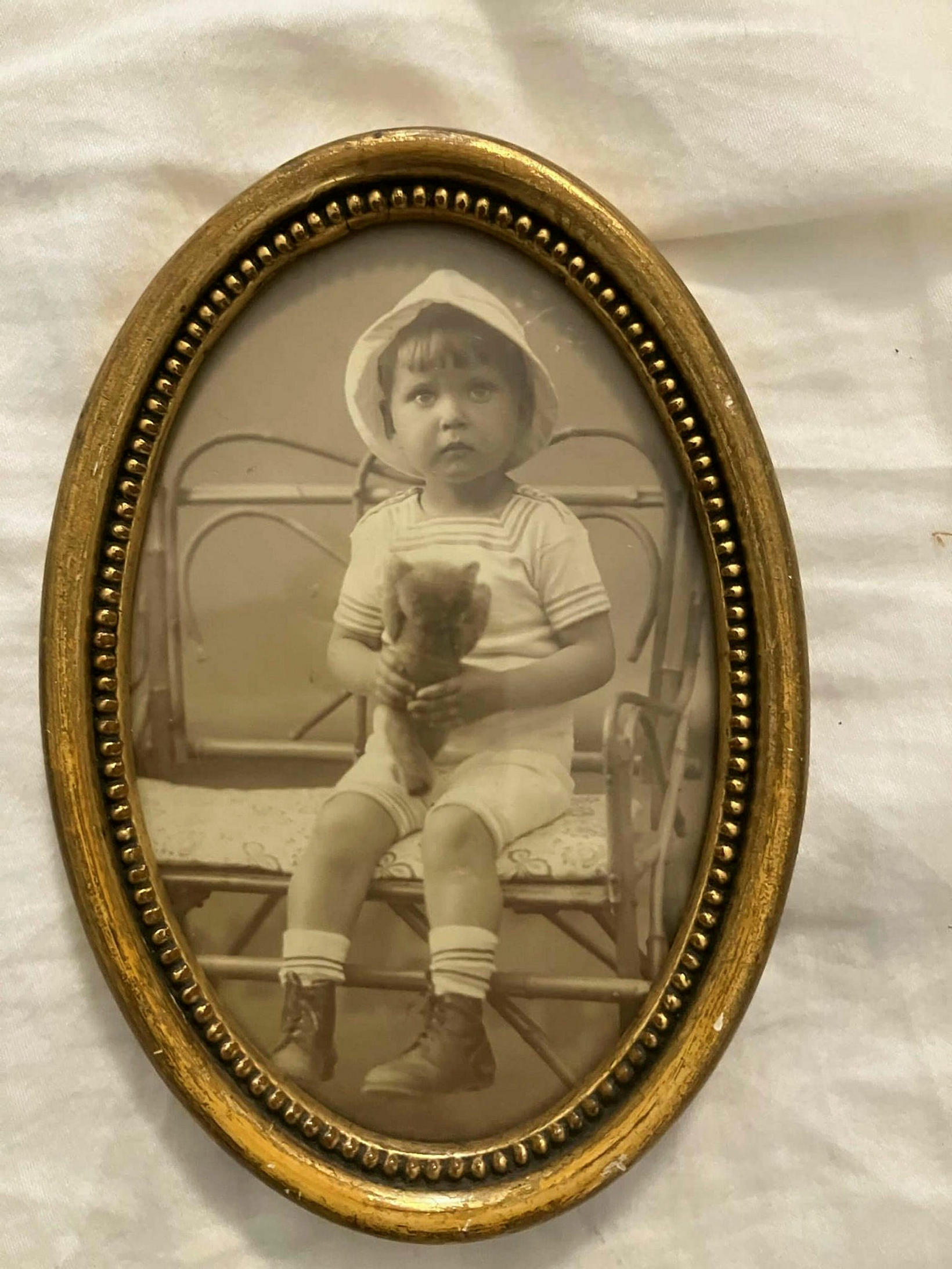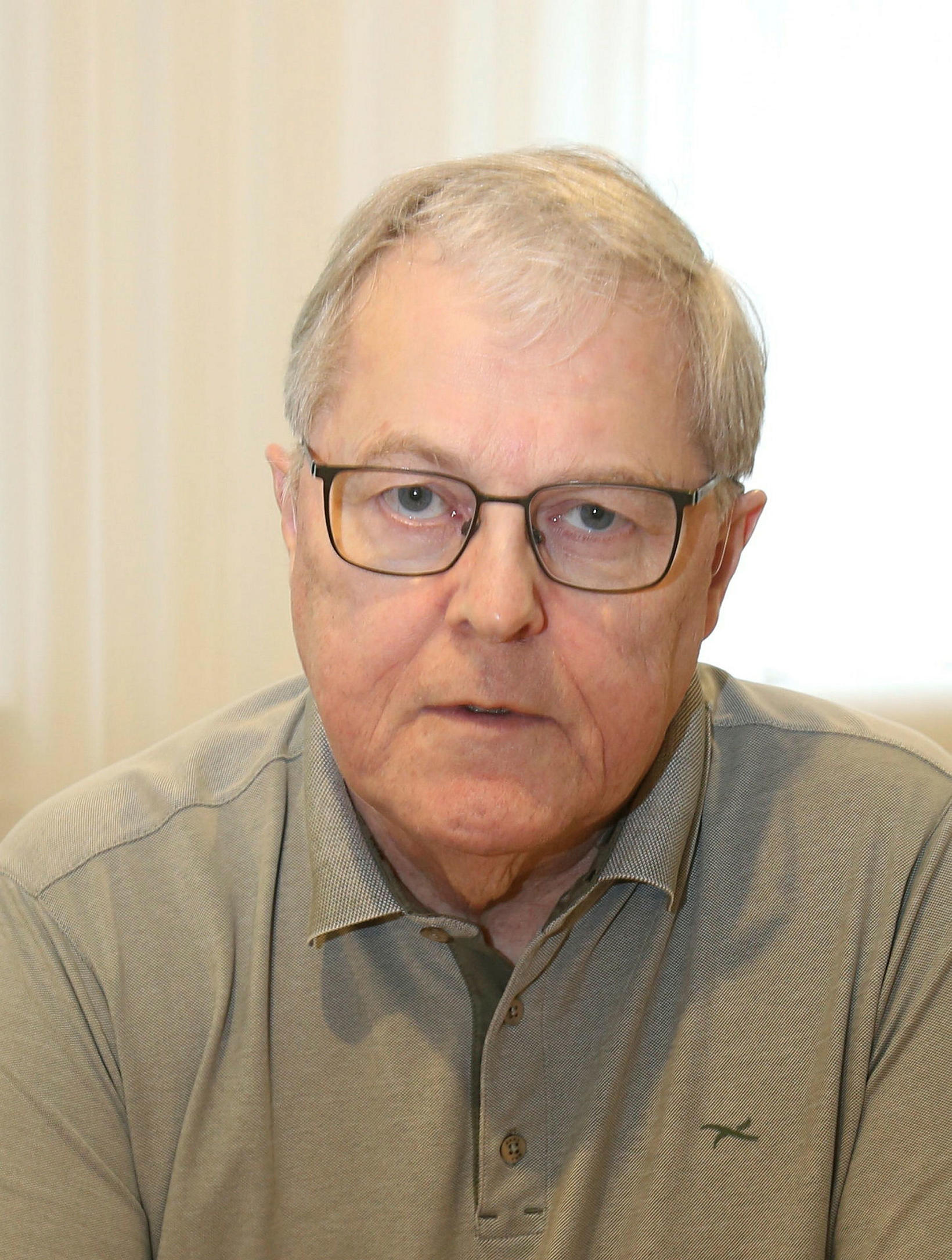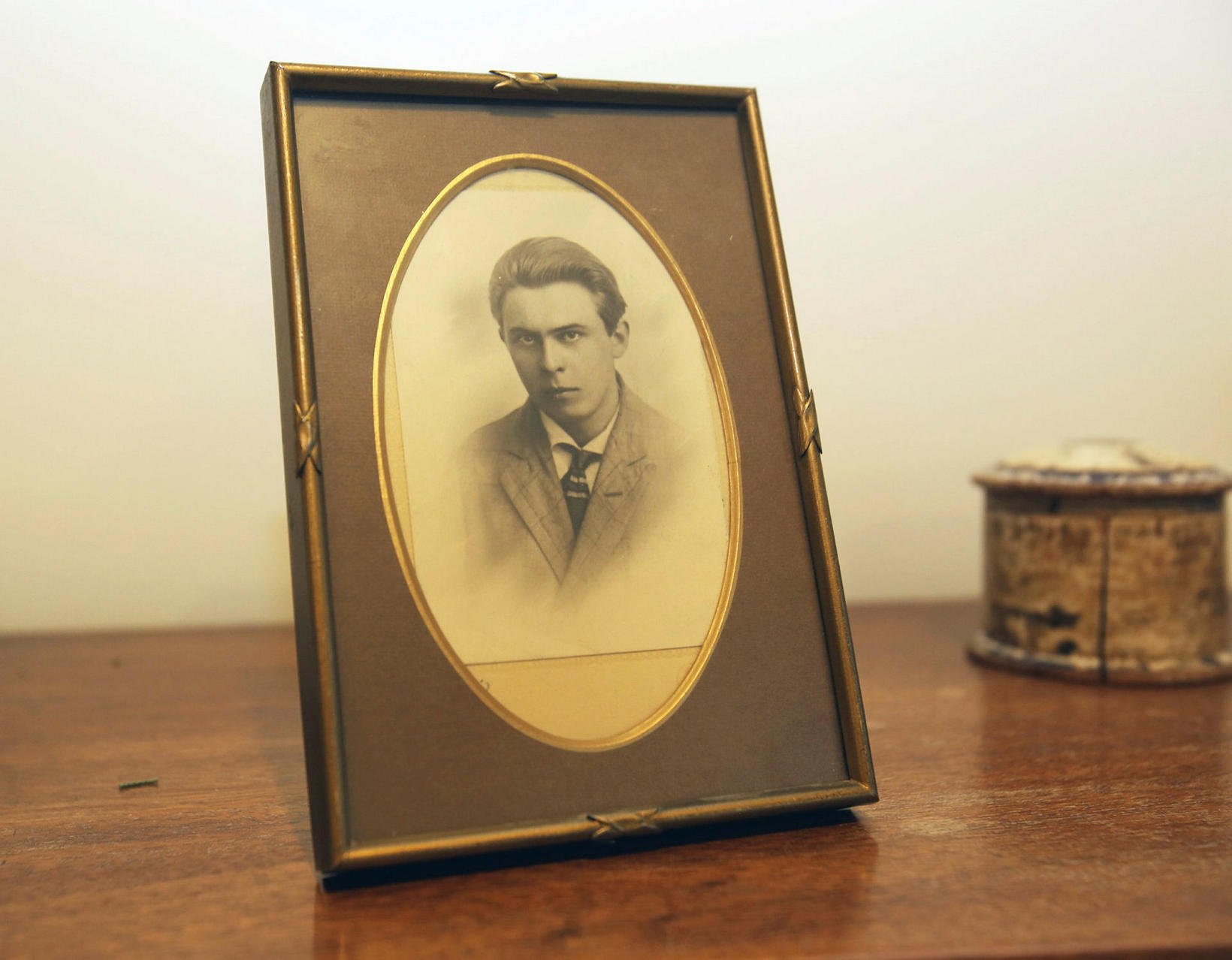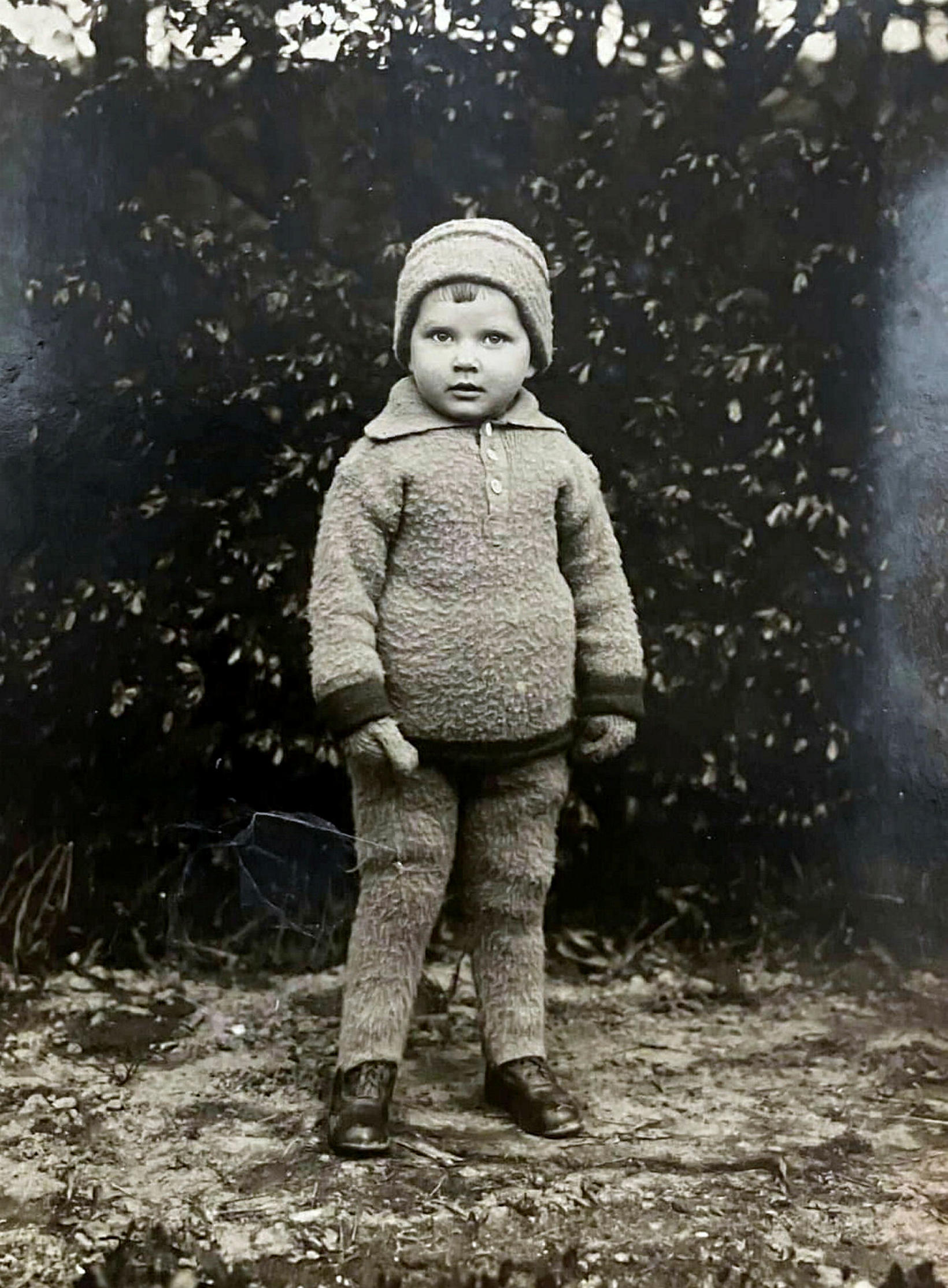The Child who couldn't be spoken about: The hidden legacy of Jóhann Jónsson
Little Knud died of tuberculosis at the age of only five. His father, the poet Jóhann Jónsson, never knew he had a child. Photographs from the family album of the descendants of Knud Østergaard the Younger.
Historian and journalist Guðmundur Magnússon is working on a biography of his great-uncle, the poet Jóhann Jónsson (1896–1932), whose works are widely considered to mark the beginning of modern poetry in Iceland. Jónsson, who died young from tuberculosis, left behind poems that still resonate with Icelanders, including the well-known piece Söknuður ("Longing"), which begins with the haunting lines, "Where did the days of your life lose their color?"
Jónsson’s life was plagued by hardship. He faced both poverty and the debilitating effects of tuberculosis, which he contracted as a child, leaving him lame for life. At the age of 19, Jónsson became romantically involved with Elín Jónsdóttir Thorarensen (1881–1956), a divorced mother of three who was approximately 15 years his senior. Their relationship, which began in 1915, was considered scandalous at the time, provoking public outrage and social ostracism.
When Elín became pregnant in 1916, she made the difficult decision to hide the pregnancy. She traveled to Copenhagen to give birth and placed the child with a Danish couple in Jutland. She took great care to keep this secret from Jóhann, and her confidant, Friðrik Aðalsteinn Friðriksson, a theologian and childhood friend of Jónsson, promised not to inform him. Elín’s choice to conceal the child’s existence would haunt the family for generations.
A mystery unveiled
Guðmundur Magnússon has long been intrigued by the mysteries surrounding his great-uncle’s life, particularly the story of this hidden child. “There has always been a lot of talk about Jóhann Jónsson in my family, and various secrets about his life. We’ve tried to track down documents that aren’t housed in museums,” Magnússon explains.
The relationship between Jóhann and Elín began in the summer of 1915 when Jóhann, studying in Reykjavík, was referred to Elín’s home for a meal. The two quickly formed a strong connection. Despite their age difference—Jóhann was just 19 and Elín was 34—their bond deepened over a year. But by the fall of 1916, the relationship ended amicably as Elín, realizing the complications of their situation, decided to move to Copenhagen. She was pregnant by then, and the child was born in May 1917, although Jóhann was unaware of the pregnancy.
Elín’s choice to conceal the child was driven by a desire to avoid public shame. She boarded the Danish ship Iceland , accompanied by Friðriksson, and sailed to Copenhagen. “She asked Friðrik not to tell Jóhann,” Magnússon says. This request would be the only confirmed detail about the child’s birth until recently.
The secret story surfaces
Elín eventually returned to Reykjavík in 1922 after a six-year stay in Copenhagen. Despite their earlier connection, she and Jóhann never crossed paths again. Jónsson, meanwhile, traveled to Germany in 1921 and died of tuberculosis in Leipzig in 1932.
In 1947, Elín, now in her seventies, decided to tell her story. She published a small book titled Angantýr , in which she referred to Jóhann as “Angantýr” and herself as “Brynhildur.” The book, while deeply personal, was controversial in Reykjavík, particularly due to the subject matter. Elín's eldest son, Jón Thorarensen, a priest, was so sensitive to the mention of his mother’s past that he reportedly bought up all the copies of Angantýr he could find and destroyed them. Notably, the book did not mention the child, only the love affair.
It wasn’t until the re-publication of Angantýr in 2011, overseen by Soffía Auður Birgisdóttir, that the story of the child was acknowledged, though Birgisdóttir’s afterword stated that it was unclear whether the child had been born or what happened to him.
The child's fate revealed
Magnússon’s breakthrough came recently when he discovered a blog by Þórdís Gísladóttir, a poet conducting research in Copenhagen on the lives of Icelandic women from the past century. “I had planned to visit Copenhagen in the fall to search for evidence but had to postpone the trip. So, I reached out to Þórdís and asked if she had come across Elín’s name in her research,” Magnússon recalls. To his surprise, Gísladóttir responded quickly, revealing that she had found a record in the Danish Maternity Aid archives from 1917. The document confirmed that Elín had received help from the organization with a newborn baby—and that the father was Jóhann Jónsson.
This discovery marked the first written evidence of the child’s existence. Gísladóttir, known for her thorough research, continued investigating and traced the child’s history. She found that the baby had been adopted by a farming couple in North Jutland, where he lived until his death from tuberculosis in 1922. Gísladóttir also uncovered that the same couple had another son that year, also named Knud Østergaard.
Through further inquiries, Magnússon reached out to the Østergaard family and learned that the adopted child had been given the same name as Jóhann and Elín’s deceased son. The Østergaard family’s younger Knud had passed away in 1922, and Magnússon received photographs of this child—photos of Jóhann Jónsson’s son, a boy the poet never knew he had.
This discovery has shed light on a long-hidden chapter of Icelandic literary history, revealing the personal and emotional complexity of Jóhann Jónsson’s life and legacy. The photographs and records of his child offer a poignant glimpse into a family secret that, for nearly a century, remained untold.







/frimg/1/57/87/1578747.jpg)



